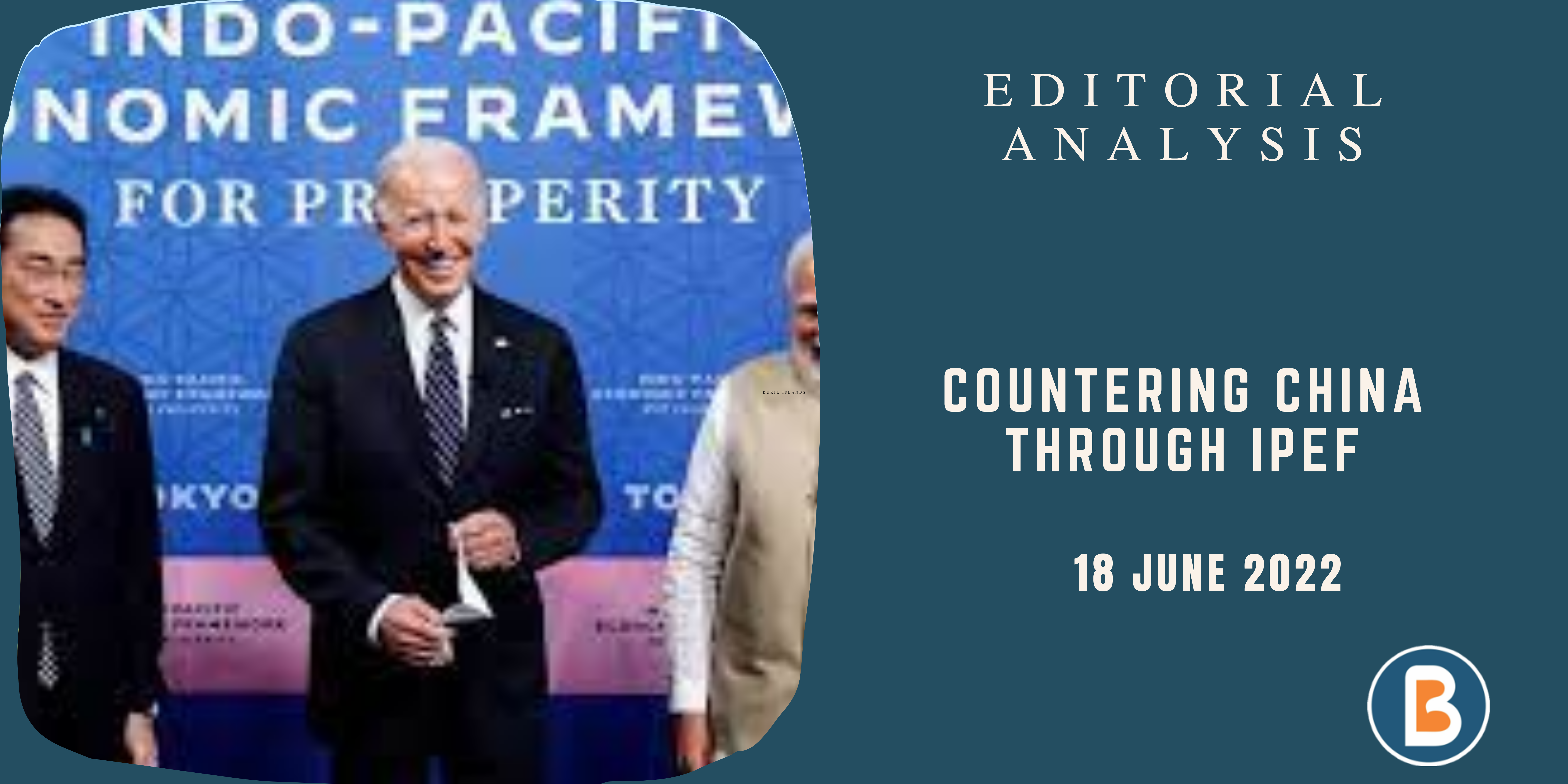Countering China Through IPEF
Context:
- The Indo-Pacific Economic Framework (IPEF), launched in Tokyo on 23 May 2022, is being touted by the US as a mechanism to counter China’s regional economic influence.
- China has raised its apprehensions, calling the Indo-Pacific Economic Framework as an economic NATO.
Background:
- According to Chinese studies of IPEF, if adopted, the economic deal is unlikely to have an immediate impact on Chinese economic interests.
- Chinese policy experts argue that China is more linked with the region than the US, citing current China-led cooperative institutions such as the Regional Comprehensive Economic Programme (RCEP) and the Belt and Road Initiative (BRI).
- Many South East Asian companies, for example, rely on China for raw materials that are processed for export to the United States or the European Union (EU).
- Furthermore, China’s commercial ties with the region are strengthening. China’s trade with the ASEAN bloc was US$ 212 billion in the first quarter of 2022, in addition to the RCEP countries.
- Regarding the likelihood of China’s economic isolation from the regional economic framework, scholars argue that due to its economic clout, China cannot be ignored.
- IPEF is doomed to fail, according to Chinese commentators, because it is a “political instrument” aimed at China and devoid of any economic content that will help the Asian region.
- Analysts believe China should take advantage of its geographic proximity and market attractiveness to expand collaboration with ASEAN, Japan, and South Korea.
What is the impact?
- Beijing’s retaliation to Washington’s IPEF strategy is likely to culminate in a geo-economic zero-sum game.
- China’s regional economic diplomacy is likely to gain more heft. As a result, we may expect China to increase capital investment, technological transfer, and infrastructure development plans for its neighbours.
- It does present an opportunity for smaller regional economies to oppose economic dominance by a single power while also forcing them to deliver public goods customised to their needs.
- Furthermore, rivalry between China and US-led institutions may push reforms inside these institutions, resulting in a better regional economic architecture, increased supply chain resilience, and improved intra-regional trade.
Source The Hindu




